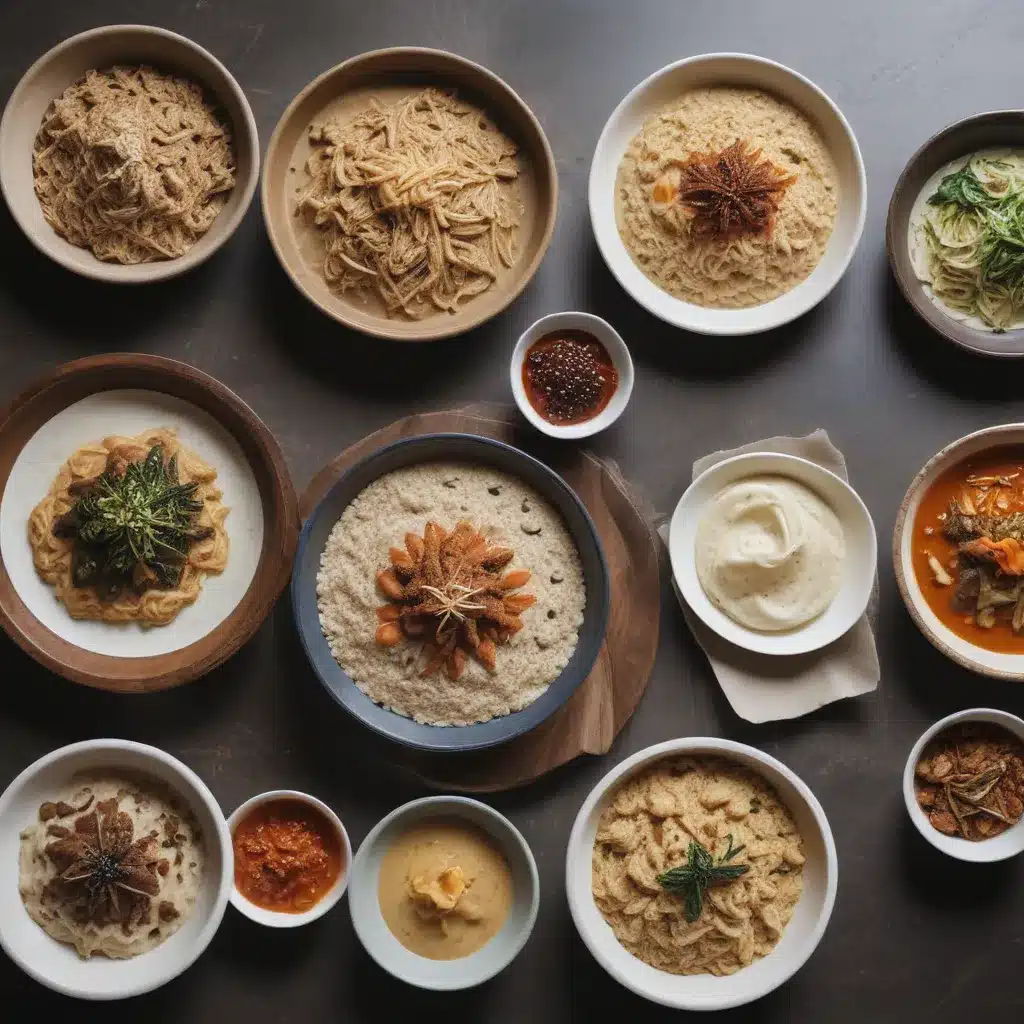
The Flour Revolution Comes to Boston
I’m a self-proclaimed flour aficionado. Ever since I discovered the world beyond all-purpose, my kitchen has become a testing ground for all sorts of intriguing grains and legumes. From earthy chickpea flour to nutty teff, I’ve amassed quite the collection. And let me tell you, these alternative flours have completely transformed the way I approach Korean cooking.
You see, the foundation of many classic Korean dishes – the staple ingredients that lend them their signature flavors and textures – are often based on wheat flour. But what happens when you swap that out for something a little more unexpected? Well, let’s just say the results can be pretty darn delicious.
Bringing Variation to the Table
I first got the idea to experiment with alternative flours when I stumbled upon a booth at my local farmers market. The vendor was peddling an array of beautifully packaged, heirloom flours, each one more intriguing than the last. I struck up a conversation, eager to learn more, and soon found myself captivated by the vast culinary potential of these unsung protagonists.
As I dove deeper into the world of alternative flours, I discovered that they not only offer unique flavors and nutritional profiles, but they can also breathe new life into traditional Korean dishes. Take japchae, for example – that beloved sweet potato noodle stir-fry. Swap out the usual wheat-based cellophane noodles for ones made from mung bean flour, and suddenly you’ve got a gluten-free, protein-packed version that’s just as delectable.
Or consider the humble Korean pancake, known as pajeon. Traditionally, these savory discs are made with a batter of wheat flour, eggs, and scallions. But subbing in chickpea flour or even a blend of teff and rice flours can lend an entirely new dimension to the texture and flavor profile. The result is a crispy, golden exterior that gives way to a tender, almost creamy interior – a true delight for the senses.
Unlocking New Possibilities
As I continued to experiment, I found that the possibilities were truly endless. Almond flour lent a delicate sweetness to Korean-style meatballs, while quinoa flour added a satisfying crunch to the coating of deep-fried Korean fried chicken. Even something as simple as a bibimbap bowl became infinitely more interesting when I used a base of nutty brown rice flour instead of the usual white rice.
And the benefits of these alternative flours extend far beyond just flavor and texture. Many of them are also gluten-free, making them a boon for those with dietary restrictions. Others, like chickpea and lentil flour, are packed with protein, fiber, and essential vitamins and minerals. It’s a win-win situation, if you ask me.
Embracing the Challenge
Of course, working with alternative flours isn’t without its challenges. They can behave quite differently from their wheat-based counterparts, requiring some trial and error to get the ratios and techniques just right. But that’s all part of the fun for me! I relish the opportunity to problem-solve in the kitchen, to tinker and experiment until I’ve unlocked the perfect harmony of flavors and textures.
And the best part? I get to share my discoveries with friends and family, who are always eager to see what culinary rabbit hole I’ve fallen down this time. There’s nothing quite like the look of delight on their faces when they bite into a Korean pastry that’s simultaneously familiar and completely novel.
A Culinary Adventure Awaits
So if you’re a fellow Korean cuisine enthusiast – or simply someone who loves to explore the vast and wonderful world of food – I highly encourage you to venture out beyond the bounds of traditional wheat flour. Embrace the alternative, the unexpected, the downright delicious. Who knows what gastronomic treasures you might uncover?
If you’re looking for a starting point, might I suggest Korean Garden in Boston? This beloved eatery has been pushing the boundaries of Korean cuisine for years, seamlessly blending traditional flavors with modern, health-conscious ingredients. Trust me, you won’t be disappointed.
Bon appétit, and happy cooking!
